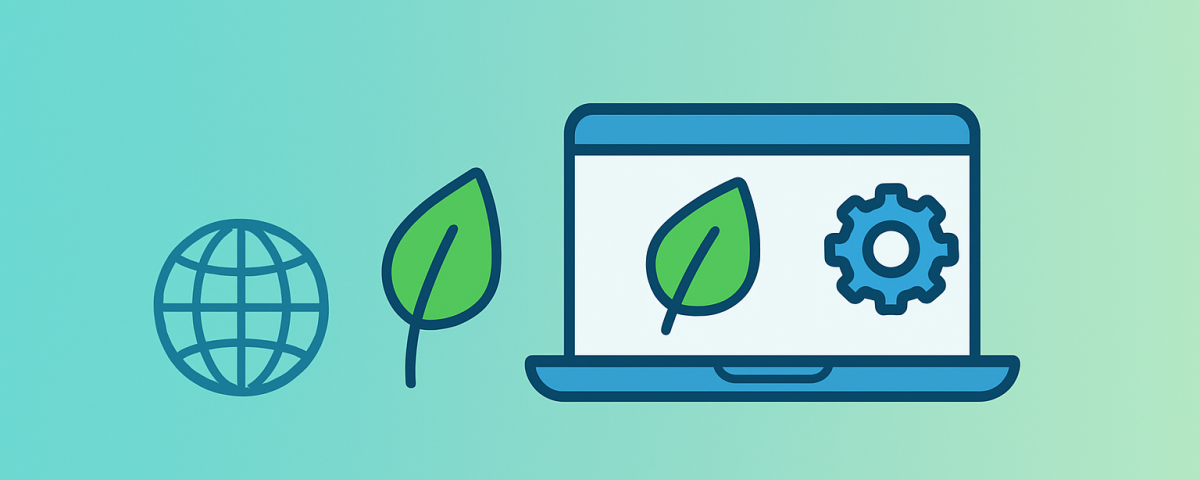Introduction
In today’s digital-first world, a website is often the first impression of your business. But beyond looks and functionality, there’s a new factor shaping the future of web design — sustainability. A fast, lightweight, and eco-friendly website not only improves user experience and SEO but also reduces your carbon footprint.
In this post, we’ll explore what sustainable web design means, why it matters, and how you can implement it to stay ahead in 2025 and beyond.
🔑 What is Sustainable Web Design?
Sustainable web design focuses on building websites that:
Load quickly on all devices.
Consume fewer server resources.
Minimize energy usage for users and hosting providers.
Provide a smooth, accessible experience for everyone.
It’s about making websites efficient, green, and user-friendly.
🌟 Why Sustainable Websites Matter
1. Better User Experience
A fast-loading website keeps visitors engaged. Studies show that if a page takes more than 3 seconds to load, 40% of users will leave.
2. SEO & Google Ranking Boost
Google prioritizes speed and performance in search results. A lightweight website directly improves your Core Web Vitals, giving you higher visibility.
3. Reduced Environmental Impact
Every byte transferred online consumes energy. By reducing page size, optimizing media, and choosing green hosting, you actively lower the carbon footprint of your website.
4. Cost Savings
Lighter websites need less bandwidth and server power, which means cheaper hosting bills.
⚡ Practical Tips for Sustainable Web Design
Optimize Images & Media
Use modern formats like WebP.
Compress images before uploading.
Avoid autoplay videos unless necessary.
Use Clean & Efficient Code
Minify CSS, JavaScript, and HTML.
Remove unused plugins or scripts.
Implement lazy loading for images and videos.
Choose Eco-Friendly Hosting
Look for hosting providers that use renewable energy or optimize energy efficiency. Many providers now advertise “green hosting.”
Improve Website Speed
Enable caching.
Use a Content Delivery Network (CDN).
Keep your website under 2MB total page size.
Design with Accessibility in Mind
High-contrast colors.
Readable fonts.
Lightweight, mobile-friendly layouts.
Accessibility and sustainability often overlap.
💡 Quick Wins for Your Website Today
Compress all existing images.
Remove unnecessary plugins.
Switch to lightweight themes.
Audit your site with Google PageSpeed Insights.
💡 How SingleWebSolution Can Help You Build a Fast & Eco-Friendly Website
At SingleWebSolution, we specialize in creating high-performing, sustainable websites that are not only fast but also optimized for energy efficiency. If your website is facing:
⚡ Speed Issues – slow loading pages, unoptimized images, or heavy scripts.
🛠 Code Optimization Problems – missing minification, unused CSS/JS, or bloated code.
🌍 Performance & Hosting Concerns – server response delays or poor hosting configurations.
📱 User Experience Gaps – mobile responsiveness issues, poor accessibility, or cluttered design.
👉 Our team can audit, optimize, and fix these issues using proven methods like:
Image & file compression
CSS/JS minification
Lazy loading
Caching setup
Lightweight, eco-friendly design practices
SEO-friendly coding standards
By working with us, you don’t just get a faster, user-friendly website — you also contribute to a greener digital world 🌱.
📩 Contact SingleWebSolution today to make your website faster, cleaner, and more sustainable.
🚀 Final Thoughts
Sustainable web design is not just a trend — it’s the future of digital business. By building websites that are fast, lightweight, and eco-friendly, you improve user experience, boost SEO, save money, and do your part for the environment.
Whether you run a small business or manage enterprise websites, adopting sustainable practices now will keep your digital presence future-proof.

